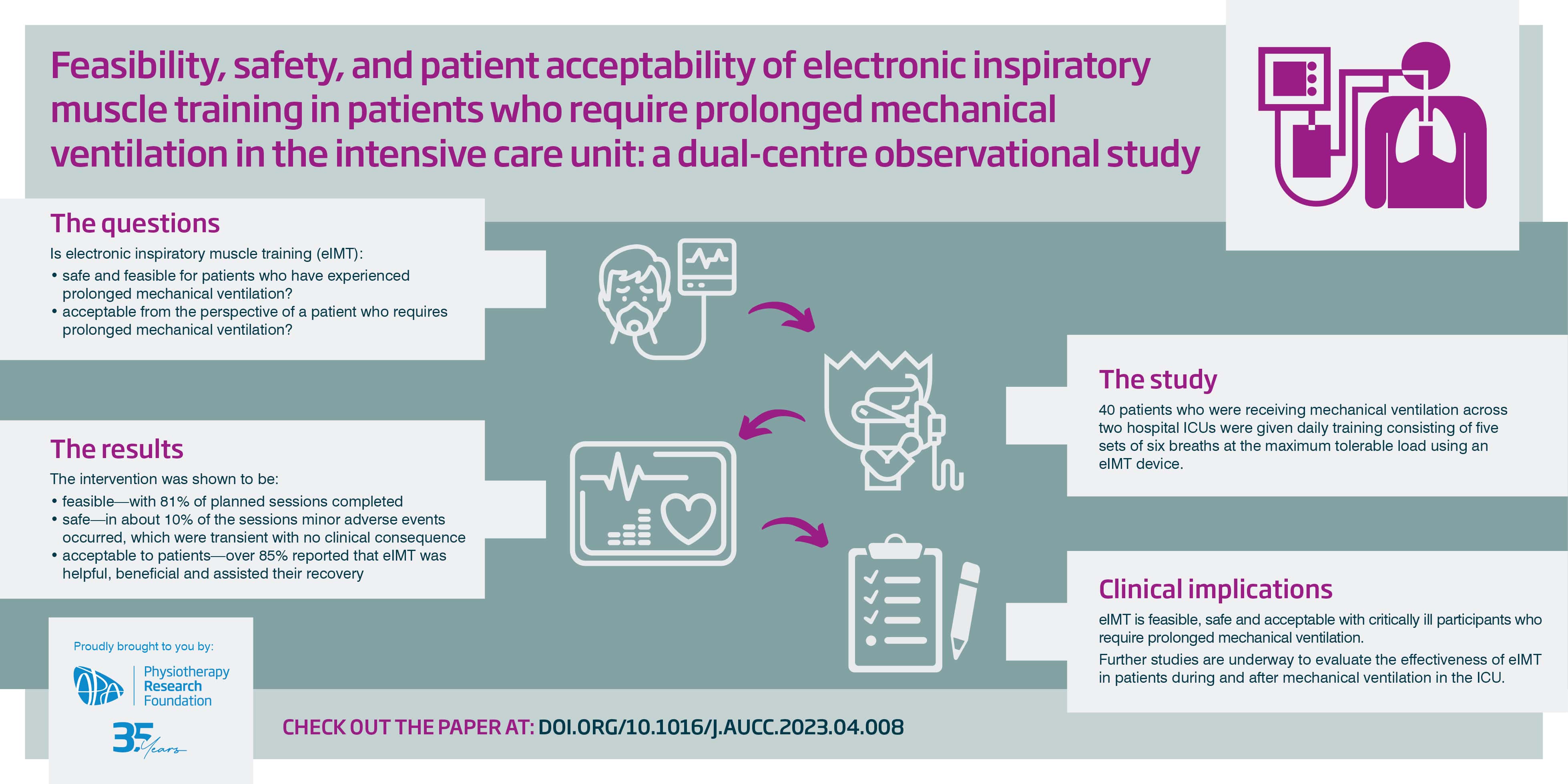Feasibility, safety, and patient acceptability of electronic inspiratory muscle training in patients who require prolonged mechanical ventilation in the intensive care unit: a dual-centre observational study
More than 50 per cent of patients admitted to intensive care units in Australia and New Zealand require mechanical ventilation. Being on a mechanical ventilator for as little as 24 hours can weaken the inspiratory muscles. Weaning patients off mechanical ventilation can be difficult, leading to a prolonged stay in ICU.
Canberra-based physiotherapist and researcher Professor Bernie Bissett APAM has been working on ways to strengthen the inspiratory muscles for around 15 years and developed a simple spring-loaded device, an inspiratory muscle trainer that provided measurable resistance that could be increased as the patient’s inspiratory muscle strength improved.
The Physiotherapy Research Foundation (PRF) has summarised key messages from the research study’s findings featured in the October edition of InMotion and produced this infographic. To read the research abstract, click here (note: paid access to full article). Click on the image below to access a printable A3 file.
About the author:
Professor Bernie Bissett APAM is a 2020 PRF Jill Nosworthy Grant recipient, Discipline Lead for Physiotherapy at the University of Canberra, and a Visiting Academic Physiotherapist at Canberra Hospital. With more than 20 years’ experience in acute care and ICU physiotherapy in Sydney, London and Canberra, Bernie’s research areas include inspiratory muscle training and early rehabilitation of ICU patients. Bernie provides advice to clinicians around the world about improving recovery from mechanical ventilation and critical illness.
This infographic is a Physiotherapy Research Foundation (PRF) initiative.

